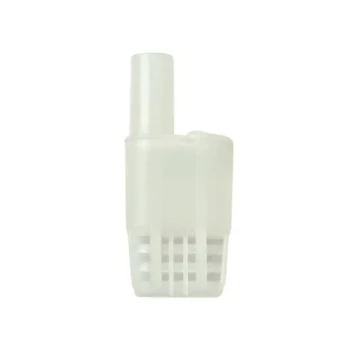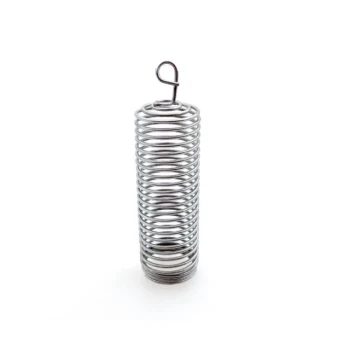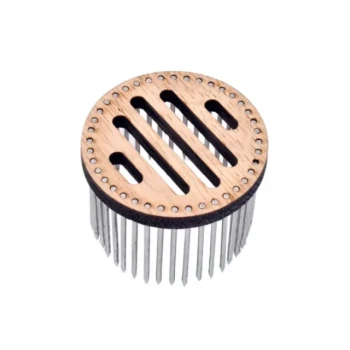When a honey bee colony loses its queen during a nectar flow, it triggers a critical survival event that effectively forfeits the entire honey harvest for that season. The colony must redirect all its energy from foraging to the time-consuming process of raising a new queen, a cycle that consumes approximately six weeks—the very window of opportunity for peak nectar collection.
A queen loss during a nectar flow is a race against time that the colony is biologically destined to lose. The six-week timeline to raise and mate a new queen and for her first offspring to mature perfectly overlaps with the finite duration of the nectar flow, collapsing the colony's foraging workforce at the most critical moment.
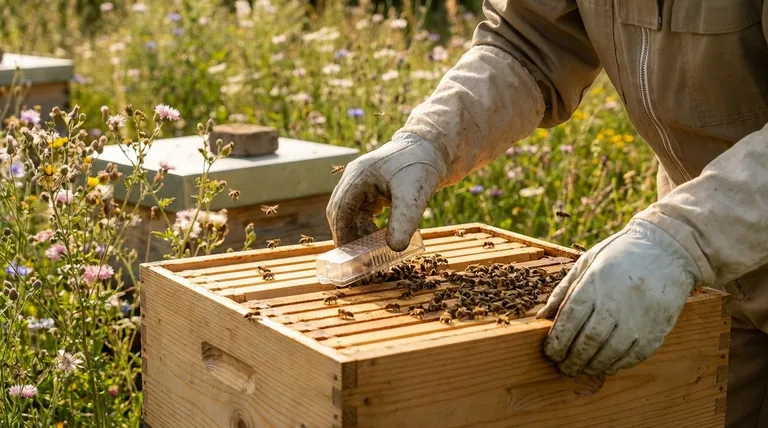
The Anatomy of a Production Collapse
Losing a queen is not a single event but the start of a domino effect. The colony's response is automatic and sequential, but this biological process is too slow to keep pace with the demands of a short, intense nectar flow.
Phase 1: The Emergency Response (7-10 Days)
The moment the queen's pheromones disappear, the hive senses it is queenless and initiates emergency procedures.
Worker bees select several of the youngest female larvae, move them into specially constructed, downward-facing "queen cells," and begin feeding them a protein-rich diet of royal jelly to trigger their development into queens. This process, from egg to the emergence of a virgin queen, takes about 16 days in total, but it takes 7 to 10 days from the moment the old queen is lost, assuming viable young larvae are present.
Phase 2: The Mating Gamble (Approx. 2 Weeks)
Once the new virgin queen emerges, she is not yet ready to lead the colony. She must first mature and then embark on several dangerous mating flights.
During these flights, she mates with multiple drones from other colonies before returning to her hive. This period is fraught with risk; she can be eaten by a predator or lost in bad weather. Only after successfully mating can she begin to lay fertilized eggs.
Phase 3: The Long Wait for Reinforcements (3 Weeks)
Even after the new queen begins laying, the colony's workforce problem is far from over. A bee's development cycle is fixed.
It takes 21 days for a newly laid egg to develop through its larval and pupal stages to become an adult worker bee. These new bees then spend their first few weeks working inside the hive before they graduate to the role of forager.
Understanding the Consequences
The combination of these three phases results in a catastrophic loss of momentum for a colony geared for honey production.
The Six-Week Brood Gap
Adding up the timelines reveals the core problem: approximately one week for the new queen to emerge, two weeks for her to mate and begin laying, and three weeks for her first eggs to become adult bees.
This creates a six-week broodless period. No new bees are emerging to replace the older foraging bees who are dying off naturally.
The Collapsing Forager Population
A honey bee's lifespan during the summer is only about six weeks. A colony in a nectar flow relies on a constant stream of thousands of new bees emerging daily to maintain and grow its foraging army.
When that stream stops, the population of field bees dwindles rapidly. Within weeks, the colony lacks the workforce needed to take advantage of the available nectar.
A Shift from Surplus to Survival
The colony's priorities fundamentally change. It is no longer focused on storing surplus honey in the supers. Instead, all incoming resources and energy are directed toward raising the new queen and, eventually, feeding her first small batches of brood. The colony is in rebuilding mode, not production mode.
Making the Right Choice for Your Goal
As a beekeeper, your response to a queenless colony during a nectar flow depends entirely on your objective for that hive.
- If your primary focus is maximizing honey production: Immediately introduce a new, mated queen to bypass the entire six-week recovery period and get the colony back to raising brood as quickly as possible.
- If your primary focus is colony survival or low-intervention beekeeping: Allow the hive to raise its own queen, but you must accept that you are sacrificing the season's honey harvest from that colony.
- If your primary focus is genetic selection: Letting the colony raise its own queen allows you to propagate local genetics, but this choice comes at the known cost of honey production.
Ultimately, understanding this timeline empowers you to make a deliberate decision that aligns with your specific beekeeping goals.
Summary Table:
| Phase | Duration | Key Event | Impact on Honey Production |
|---|---|---|---|
| Emergency Response | 7-10 Days | Workers raise a new queen | Foraging focus shifts to brood rearing |
| Mating Gamble | ~2 Weeks | Virgin queen matures and mates | No new eggs are laid; forager population declines |
| Brood Replenishment | 3 Weeks | New queen's first eggs become adult bees | Critical 6-week gap with no new foragers emerging |
| Total Impact | ~6 Weeks | Colony in survival mode | Honey harvest is effectively forfeited |
Don't let a queenless colony cost you your season's harvest. Time is honey, and a swift, informed response is critical. HONESTBEE supplies commercial apiaries and beekeeping equipment distributors with the reliable tools and expert knowledge needed to manage these high-stakes situations effectively. From mated queens to essential hive management equipment, we provide the wholesale solutions that keep your operation productive.
Contact our team today to discuss how we can support your beekeeping success.
Visual Guide
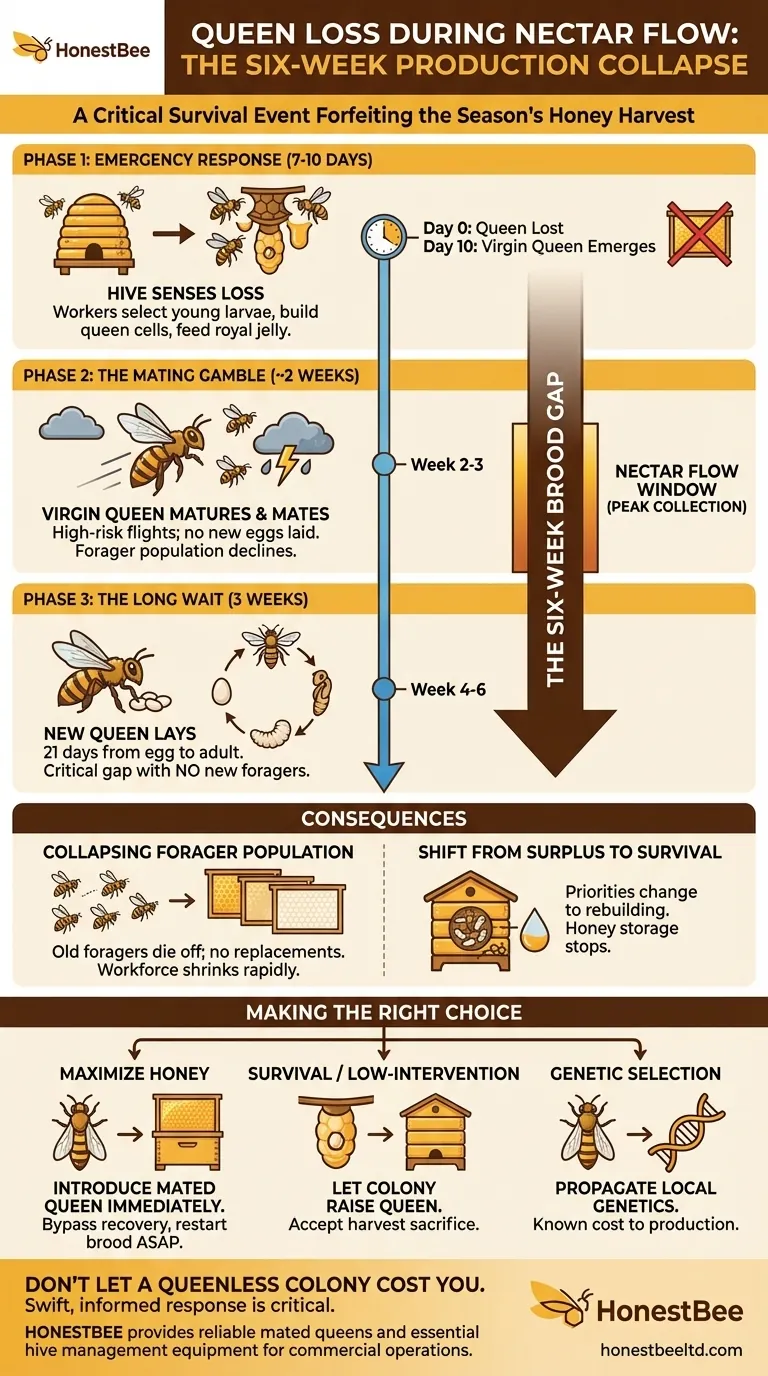
Related Products
- Professional Multi-Functional Queen Bee Cage
- Multi-Function Queen Roller Cage and Catcher
- Durable Galvanized Steel Spring Queen Bee Cage
- No Grafting Queen Rearing Kit: System for Royal Jelly Production and Queen Rearing
- Premium Wood and Steel Push In Queen Cage
People Also Ask
- How should a queen cage be maintained over time? Ensure Queen Introduction Success
- What items are needed to place the queen bee's cage in the hive? A Guide to Successful Queen Introduction
- What is sequestration, and how does it help bees reorient? A Safer Guide to Hive Relocation
- How long does it typically take bees to adjust to a new queen? Master the 2-7 Day Acceptance Window
- Why might bees reject a new queen? A Guide to Successful Queen Introduction

